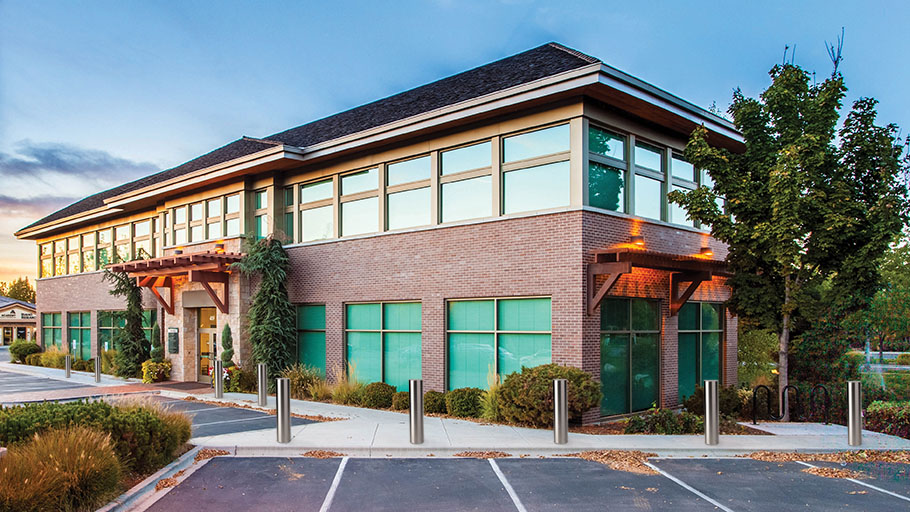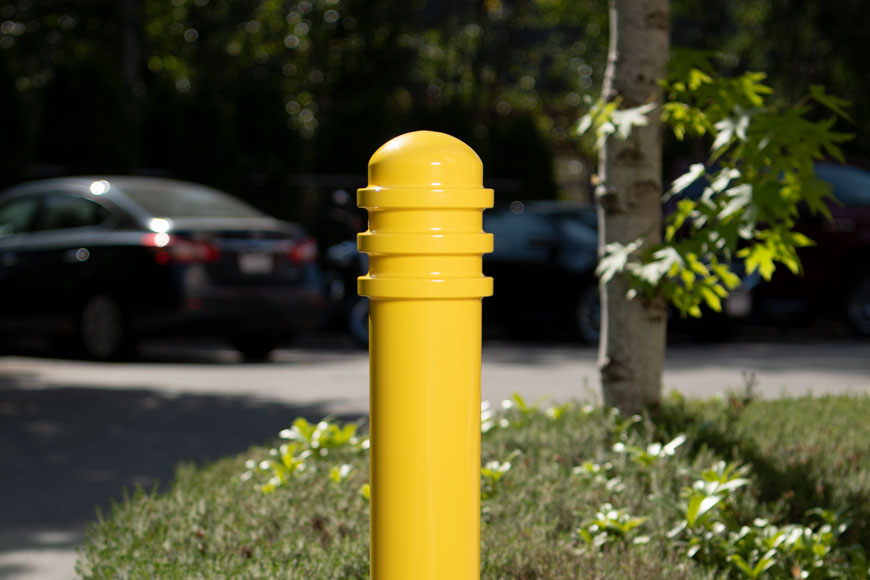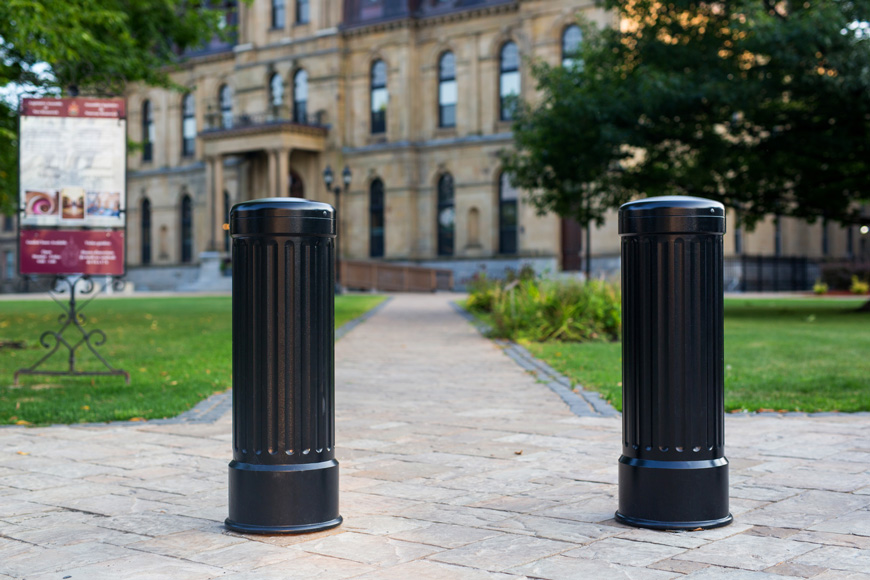Convenience-store stop-off changes everything
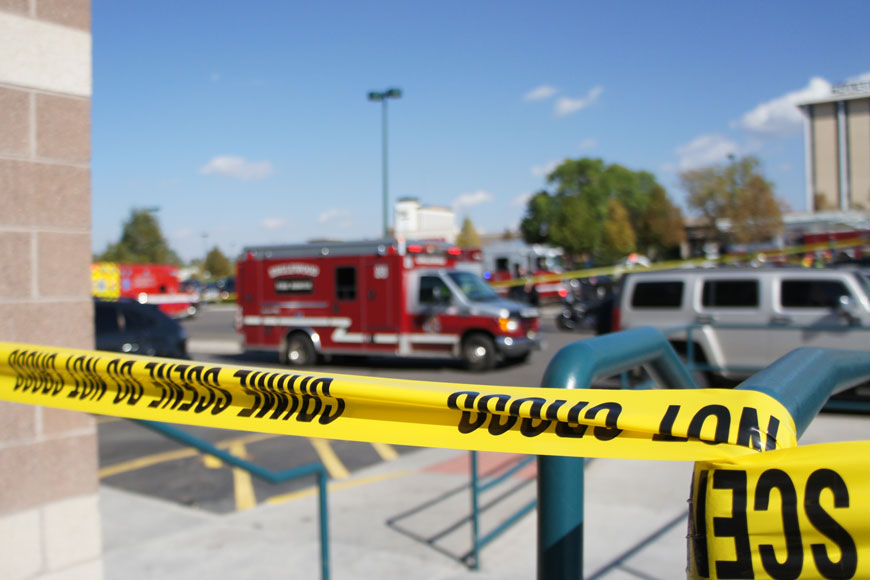
Mark Wright is a passionate advocate for pedestrian safety—especially when it comes to vehicle accidents. As a co-founder of an organization dedicated to raising awareness of vehicle-into-building collisions in North America, he’s appeared on television and radio and in newspapers. He’s also written about the subject in magazines and presented at national safety conferences. What distinguishes him from many safety advocates, however, is his first-hand experience.
Convenience store stop-off
Wright had never been in a pedestrian-related accident before, but on August 17, 2008, he decided to stop at a convenience store near his house. He was dog-sitting at the time, but it was a short stop, so he left the dog in the car with the windows down. Within minutes, a Diet Coke and a pack of Hostess Sno Balls in hand, he was on his way out.
As he pushed the door open to leave, a car pulled into the stall directly in front of the entrance. It didn’t stop. “She didn’t hit the brake, evidently,” says Wright. “Within the blink of an eye, the car was crashing into me, and I just instinctively put my hands out—as if that would do something. But your brain and body just react.” He remembers his hands touching the hood of the car before being knocked back into the store.
The car stopped part-way through the entrance, and the store was silent. Wright was in shock, with shards of glass in his hand and littered around him on the floor, his left knee severely injured and bleeding badly. “I think everyone in the store was equally in shock. Everyone was just frozen, including the driver,” says Wright. “I began yelling embarrassingly like a 2-year old for people to dial 9-1-1.”
For Wright, lying on the floor, it seemed a long time before help arrived. In the meantime, someone gave up a jacket to wrap his knee and stop the bleeding. To calm Wright down, someone put their phone in front of Wright’s face to show he had in fact dialed 9-1-1. Another person from the emerging crowd looked after the dog in Wright’s car. The police finally arrived to interview him and the driver. Then the ambulance came to take him to the hospital, where he began his recovery.
After a car crash, a long road to recovery
In the hospital, Wright had a lot of time to think. “Your brain starts trying to process the whole thing. I’m asking myself why? What happened here?”
“What bothered me early on was that, how come a store, if you have parking spaces that literally bring cars right up to your front door, why would you allow yourself, as a business, to be a sitting duck—and your people, your customers and your employees to be sitting ducks—when all you have to do is put up some kind of perimeter barrier to protect yourself?”
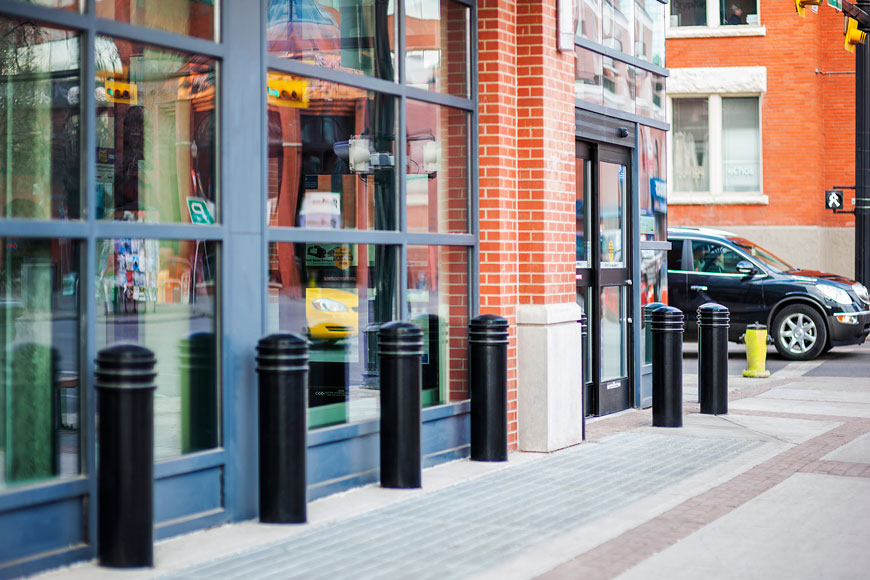
Bollards offer better storefront protection
In the weeks following the crash, Wright had two surgeries done on his knee, spending time in nursing homes after each one. Once at home, he began rehabilitation. “That was a difficult part of the whole process. You basically have to learn—because your leg is all splinted up, you can’t move, you can’t put weight on it—how to get around in a wheelchair, and eventually with a walker. It was a real learning process to slowly get back to a normal life.”
It took him nine months from the day he was hit to be deemed fully recovered. Though, the range of motion in his knee is a bit less than the other one, and just this winter he began feeling symptoms of arthritis—something he says is probably age-related but that his doctor warned would be likely after this injury.
Pedestrian crashes are more common than you think
During his recovery, Wright began researching the issue of vehicles crashing into buildings. “I had nothing better to do, and I was really interested,” says Wright. “I started Googling around, and I discovered rapidly tons of search results popping up with these kinds of accidents.” Much of what he found seemed to be running under the public radar.
‘Accidents happen. Drivers are human. They’re fallible’
“I found that both surprising and frustrating, because when I realized how frequent these things happened, I thought this needs to get the light of day,” he says.
Wright started a blog to document these incidents. He wanted to get a sense of how often they occur, and to share the stories with others. “I basically started throwing it out online to say, ‘Hey, they happen a lot, this is a problem and here’s a bunch of proof,'” says Wright. “I’m sure there might have been smarter ways to go about it. I just sort of—ready, fire, aim—I just started doing it.”
There were times when he would scour the internet every day to find anything he could to show some meaningful numbers. He publishes the informative blog StorefrontCrashes.com to let people know about the work he does in this field, and has since worked with journalists, publishers and national safety organizations to make the issue more well-known.
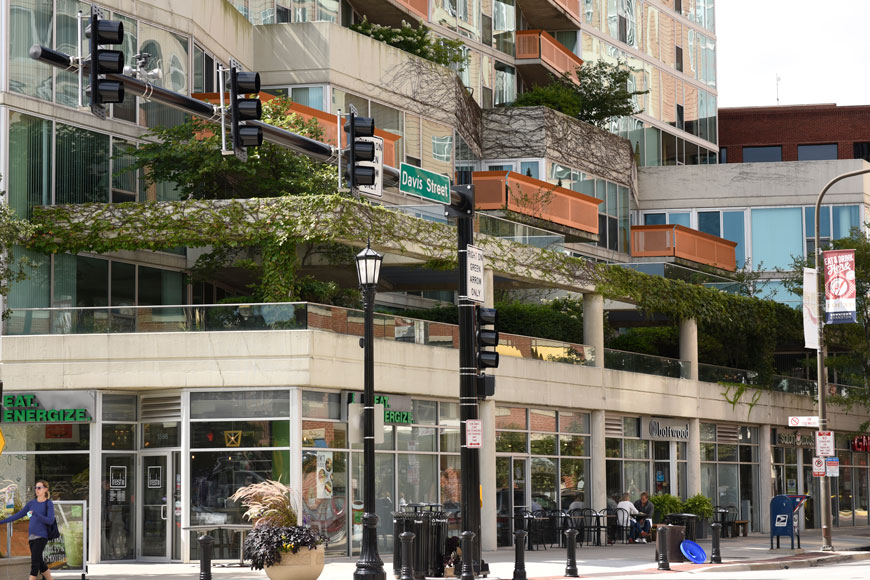
Protecting pedestrians from being hit—and drivers from simple mistakes
On the day he was hit, Wright felt as bad for the driver as he did for himself. “I remember seeing her on the other side of the windows, looking at me, trying to tell me she was sorry, silently, from 10 or 15 feet away. She was clearly, obviously, upset.” Before he left in the ambulance, she knocked on the door and began apologizing. “At that point, they had plugged me into the morphine, and the best I could do was wave to her and tell her not to worry.”
“Obviously, I was not happy she ran into me, but it was an accident. I didn’t hold it against her. It’s not like she aimed at me. It’s not like she was a twenty-something college kid who was racing his buddy and lost control of his car. It wasn’t anything negligent, per se. She just messed up somehow.”
Accidents happen. Drivers are human. They’re fallible.
“Thankfully, I was able to recover,” says Wright. “There are other people out there who have suffered on-site amputations or been killed from being hit by a car that’s crashing into a store, restaurant or other building. There are some real tragedies involving people of all ages, people of all colors, people of all walks of life. Mothers, fathers, kids, you name it. You’ve got a pretty diverse set of victims out there who have been on the wrong end of one of these crashes.”
Having been through the experience, Wright is more mindful of the protections used by property owners around their buildings—especially with the nose-in style of parking he encountered when he was hit. “I’m agnostic as to what the solution is, as long as it is effective.”
Wright says that when designing buildings and parking areas, it’s important to understand that people are part of the equation.
“It’s not just a couple thousand pounds of dumb metal that happens to hit other dumb materials,” says Wright. “I mean, property damage, yeah, that’s terrible. You hate to see it, but that’s what you have insurance for. Person-damage, that’s something else. You can have all the insurance coverage you want, and you can cover somebody’s medical costs if they get better, but that money will not ultimately be able to reverse the experience that that person just had.”
Pedestrian crash prevention
When planning the layout for a building or site, it’s important to keep vehicles away from sensitive building and pedestrian areas. Most building walls aren’t designed to withstand vehicle impacts, and it doesn’t take much for a car or truck to penetrate even the sturdiest of structures. Repairs are costly, and they can have a negative impact on visitors—and profitability.
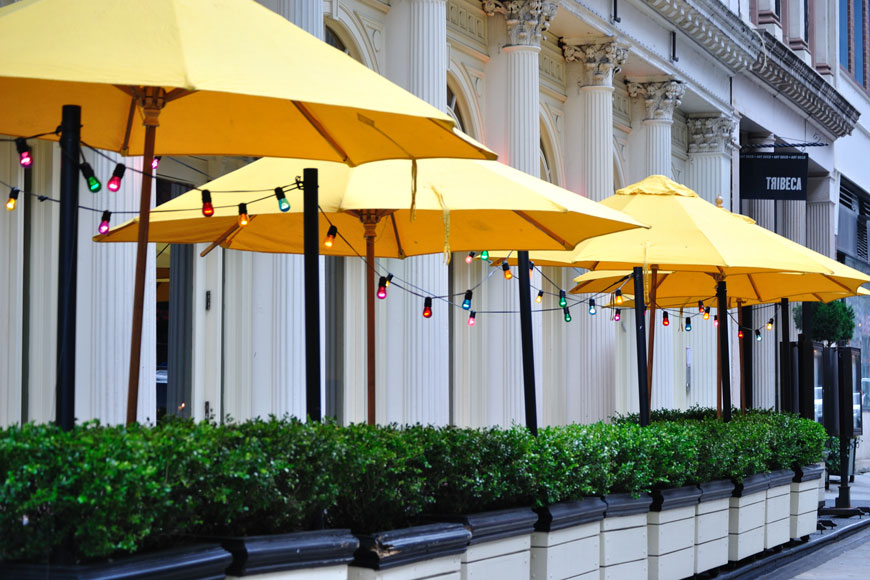
That’s to say nothing about the people—potential customers or employees—that are likely inside. Without the proper protection, storefront entrances, sidewalks and outdoor patios can leave people especially vulnerable.
Wright describes innovative solutions he’s seen—where, instead of pointing vehicles at buildings with nose-in parking orientations, travel lanes traverse building storefronts. These configurations essentially point vehicles “toward a berm or something that isn’t people, and isn’t the building,” says Wright. He also describes other solutions, such as built-in planter walls across storefronts. “They’re attractive. They’re seamless. You don’t even think about them. When you’re a customer, walking into the Starbucks or the Chipotle that’s behind these barriers, all you are aware of is that you feel safer. You feel separated from the cars.”
For existing sites, bollards offer a relatively inexpensive and non-intrusive safety solution for vulnerable areas. Steel pipe bollards are made from structural-grade steel, designed to be embedded deep in ground to withstand vehicle impacts—and to protect the people and property beyond. Their stopping power varies based on local conditions and should be evaluated by a site engineer. Crash-rated bollards have an engineered footing that provides tested stopping-power when installed correctly. Either security pipe or crash-rated bollards can also be painted or concealed with a range of aesthetic and protective covers—to prevent corrosion and to complement the aesthetics of the surrounding site.










